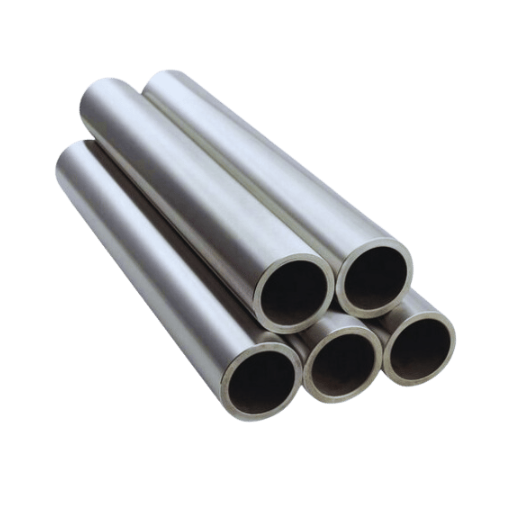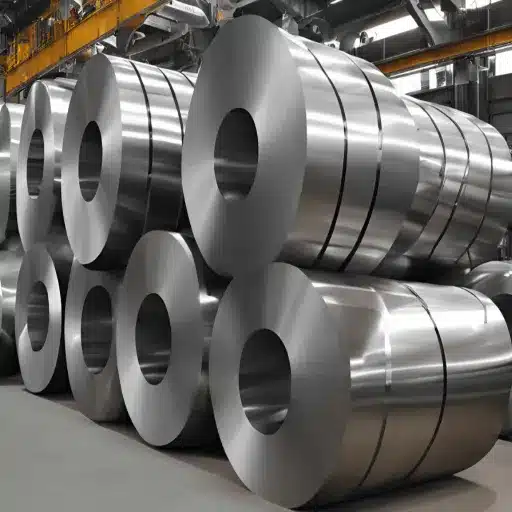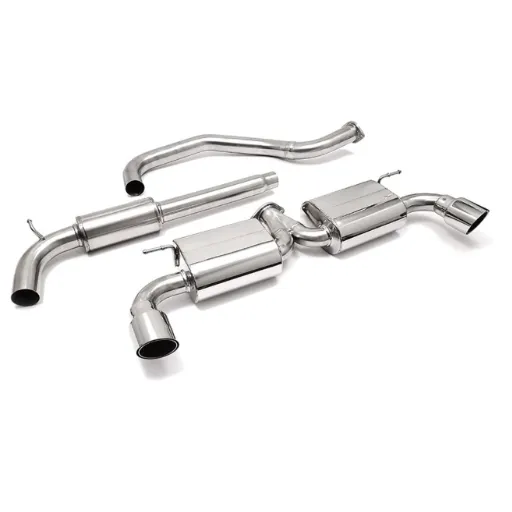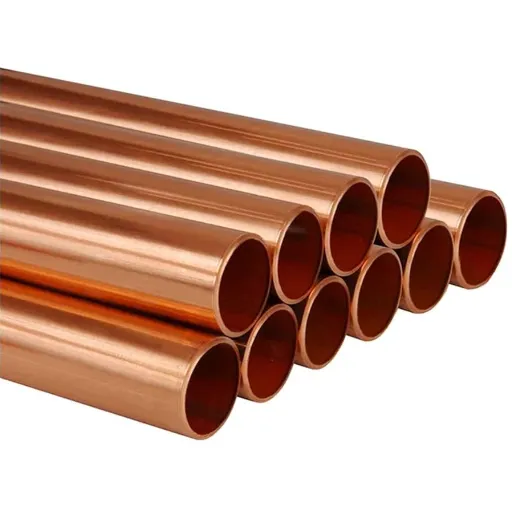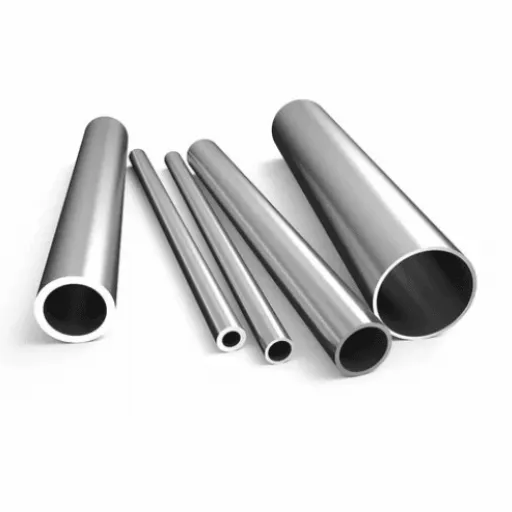Stainless steel is a critical material across numerous industries, valued for its strength, corrosion resistance, and longevity. Among the various grades of stainless steel, Duplex and Super Duplex stand out for their exceptional performance in demanding environments. However, the differences between these two grades are not always clearly understood, leading to confusion when selecting the appropriate material for specific applications. This article aims to demystify the distinctions between Duplex and Super Duplex stainless steel by exploring their compositions, properties, and practical uses. Whether you’re involved in construction, marine engineering, or chemical processing, understanding these differences will help ensure you choose the optimal grade for your needs.
What is Super Duplex Stainless Steel?
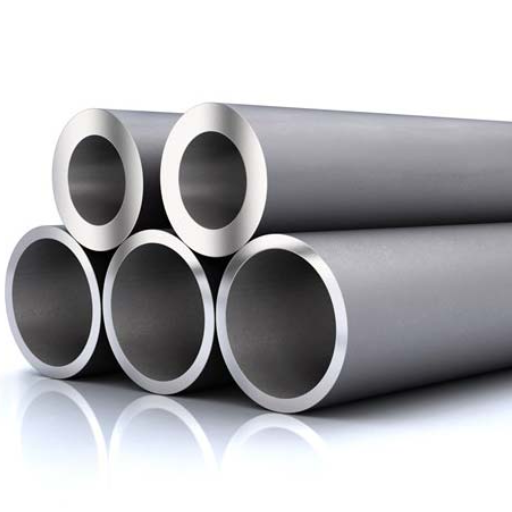
Understanding Super Duplex Grades
Super Duplex stainless steels are a new class of steels with greater strength and corrosion resistance than standard Duplex grades. The term “Super Duplex” is derived from their properties that are enhanced due to a two-phase microstructure of austenite and ferrite, usually 50/50. Its superstructure grants it exceptional mechanical properties such as the ability to endure high pressures and withstand highly corrosive environments.
In comparison to other duplex steels, Super Duplex stainless steels contain higher amounts of chromium, molybdenum, and nitrogen. These elements enable super duplex steels to have a better resistance to pitting, crevice, and stress corrosion cracking. High molybdenum content makes super duplex steels more stable to chloride-rich environments, thus suitable for offshore oil and gas platforms, desalination plants, and chemical processing. Moreover, super duplex steel retains its mechanical properties at both low and high temperatures.
Supr Duplex grades are often utilized in industries that require both the durability of structures and a long service life. For example, subsea pipeline systems and heat exchangers use these materials because of their ability to withstand high mechanical loads. Their excellent characteristics not only minimize the possibility of material failure but also maximize equipment lifespan, which is critical in lowering maintenance costs over time. Knowing the functionality and performance of Super Duplex stainless steel, engineers and designers can make informed decisions and select the right grade for their projects.
Characteristics of Super Duplex Material
Widely recognized for having unparalleled mechanical strength and corrosion resistance, Super Duplex stainless steel is perhaps the most applicable in demanding industrial environments. Because of its dual-phase microstructure comprising austenite and ferrite, it has better tensile strength, resistance to pitting, and stress corrosion cracking. These properties in particular are beneficial for chemical processing, oil and gas, and desalination industries.
Equally important is Super Duplex stainless steel’s resistance to chloride-induced corrosion. Even in highly chlorinated environments where most stainless steels become useless, this material maintains its structural integrity, which is pitched as its greatest advantage. Chromium, molybdenum, and nitrogen make the steel resistant to localized corrosion, which in highly aggressive conditions sets it apart from other materials.
Super Duplex stainless steel is distinguished by its weldability and thermal conductivity, as it as in corrosion resistance. Its lower thermal expansion coefficient, when placed beside standard austenitic stainless steels, is an asset for applications that need stability under fluctuating temperatures. Additionally, this puts it ahead of competitors needing custom structures without sacrificing material performance in critical infrastructure projects that prioritize reliability.
Applications of Super Duplex Steel
Industries that require heightened structural integrity and durability, like the oil and gas sector, rely heavily on Super Duplex Steel, which is also useful with subsea pipelines, offshore platforms, and processing equipment. Furthermore, this material can withstand erosion caused due to stress corrosion cracking alongside pitting in chloride-rich zones, which greatly enhances its reliability in extremely harsh marine environments.
Super duplex steel has also found useful applications in constructing chemical processing plants, as they contain aggressive chemicals and acids. Its corrosion-resistant capabilities make it suitable for pressure vessels, storage tanks, and heat exchangers. The sturdy mechanical properties and corrosion resistance qualities of super duplex steel further enhance the safety and costs incurred due to maintenance, mitigated over time.
Super duplex steel is crucial in further enhancing the system efficiency and super reliability in harsh operational environments, thus highlighting its importance in the construction of power generation facilities and seawater desalination plants. These materials require great strength to withstand saline environments and swift cooling, thus making super duplex steel suitable for use in condensers, heat exchangers, and other structural components.
Exploring the Difference Between Duplex and Super Duplex
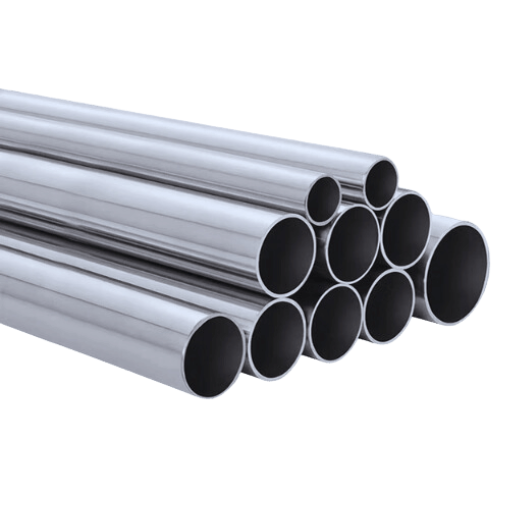
Comparing Corrosion Resistance in Both Grades
With elevated levels of chromium, molybdenum, and nitrogen, Super Duplex Stainless Steel has greater corrosion resistance than Duplex Stainless Steel, which makes it suitable for harsher environments.
| Aspect | Duplex | Super Duplex |
|---|---|---|
|
Chromium Level |
~22 |
~25 |
|
Molybdenum Level |
~3 |
~4 |
|
Nitrogen Content |
~0.2 |
~0.3 |
|
PREN Score |
~34 |
>40 |
|
Resistance |
High |
Superior |
|
Application |
Moderate |
Harsh |
|
Expense |
Lower |
Higher |
Evaluating Strength and Corrosion Resistance
Like other grades of duplex and super duplex stainless steels, duplex steels have commendable mechanical properties and resistance to corrosion due to their dual-phase microstructure consisting of roughly equal parts of austenite and ferrite. The interplay of these two elements results in strength and toughness that surpasses those of traditional austenitic and ferritic stainless steels. Furthermore, the yield strength of these materials is approximately 2-3 times greater than standard austenitic grades like 304 or 316. This property makes these steels useful for construction, bearing significant structural loads.
In terms of corrosion resistance, super duplex stainless steels have greater resistance to pitting, crevice corrosion, and stress corrosion cracking, especially in chloride-laden environments such as seawater or chemical processing industries. This is primarily due to the increased chromium, molybdenum, and nitrogen content present in these steels when compared to duplex grades. For example, super duplex grades like SAF 2507 have a PREN (Pitting Resistance Equivalent Number) of over 40, further showing that these steels withstand harsher conditions where localized corrosion poses severe issues.
It is important to note that mechanical load requirements, operational temperatures, and corrosion potential also form part of the operational requirements that must be considered when choosing between duplex and super duplex alloys. While duplex grades are acceptable for moderate conditions, super duplex alloys are favored in extreme conditions due to their enhanced material properties, which ensure longer service life and lower maintenance costs. These attributes make both grades invaluable across various industries, ranging from desalination plants to offshore oil and gas facilities.
Cost Considerations: Duplex and Super Duplex Stainless
Assessing the cost considerations for duplex and super duplex stainless steel, both the initial material expense and the lifecycle costs are vital. Compared to super duplex grades, duplex grades are usually more cost-effective because of the lower alloying constituents, which drives the reducing the cost of production. However, the environment’s level of corrosiveness, along with any stress factors, might require more maintenance or replacement, which increases operational cost in the long run.
Although more expensive initially, super duplex stainless steels are cost-effective in the long run in harsher extreme environments due to the larger quantities of alloying elements like molybdenum and nitrogen. Their mechanical strength is unmatched, and their resistance to pitting, crevice corrosion, and stress corrosion cracking is outstanding, resulting in increased durability, fewer shutdowns, and reduced maintenance. They more than make up for the expensive initial cost in operational savings when used in harsh marine or chemically exposed applications like subsea pipelines or heat exchangers.
Also, the alloying metal, like nickel, can be subject to price volatility, along with the complexity of fabrication and regional accessibility, which can impact the cost of duplex and super duplex grades. Cost-benefit analyses based on the use case scenario of the project should be done alongside the expected operational setting, lifespan, and upkeep. This ensures the best decision is made for the project while maintaining economic efficiency.
How Does Corrosion Resistance Work in These Alloys?
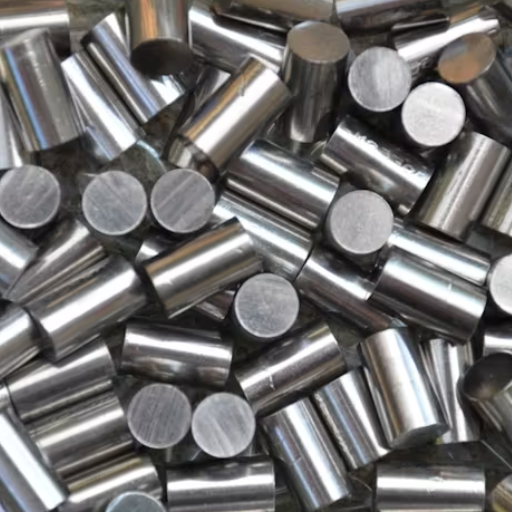
Factors Affecting Resistance to Corrosion
The corrosion resistance that duplex and super duplex stainless steels have is highly dependent on their chemical composition and their metallurgical structure. The alloys’ resistance to pitting, crevice corrosion, and stress corrosion cracking is enhanced by the protective oxide layer, which is a result of the high chromium (22%-25 %) and molybdenum (up to 4%) content. The alloys also contain nitrogen, which improves mechanical properties and serves as an additional defense against pitting, particularly in chloride-rich regions.
Environmental factors greatly influence corrosion as well. The onset and progression of corrosion could increase due to the presence of chlorides, high temperatures, and acidic or alkaline conditions. Equally important to consider is the alloy’s Critical Pitting Temperature (CPT) and Critical Crevice Corrosion Temperature (CCT), as they dictate performance limits for each specified condition.
Other factors that could alter resistance to corrosion include the processes of manufacturing and heat treatment done before. Residues and microstructural alterations can occur due to improper welding and not fully passivating, which could result in localized weaknesses. The alloy’s mechanical integrity can be enhanced through effective fabrication and quality control measures.
These principles can result in a degradation of material, which can be mitigated and aligned with the operational needs of the system, ensuring these stand the test of time while being cost-efficient.
The Role of Chromium, Nickel, and Molybdenum
The addition of chromium, nickel, and molybdenum into metal alloys results in greatly improved mechanical and chemical properties by making the alloy corrosion resistant.
- Chromium (Cr): The availability of chromium defines its necessity to produce alloys, which enhances their value. The material should have an oxide layer that passively forms on its surface, so that corrosion resistance is significantly improved. Stainless steel with chromium has alloy content that varies from 10.5% to 30%. The 12% minimum requirement of chromium to enable self self-sustaining protective layer to survive for several decades in diverse environments.
- Nickel (Ni): Improvement of ductility and toughness, as well as increased corrosion resistance in acidic and chloride surroundings, supports marine industry requirements. Those changes help the chemical processing industry as well. Alloys with an austenitic structure require nickel as a stabilizer and ductile member. The 300 series of stainless steels contains 8-12% nickel, making it more efficient in cryogenic and high-temperature areas.
- Molybdenum (Mo): Molybdenum contributes to the resistance of pitting and crevice corrosion of alloys, especially in environments rich in chlorides. In super austenitic stainless steels and nickel-based superalloys, it is usually found in the range of two to six percent. Molybdenum is useful in seawater applications, like in desalination plants and offshore oil rigs, because other alloys are destroyed by localized corrosion.
- Iron (Fe): Iron serves as the principal framework for different alloys, which is often augmented by chromium, nickel, and molybdenum to form ductile wrought alloys. Iron-based alloys are the most useful type of alloys in industries because of their mechanical strength and low cost.
- Carbon (C): Although carbon is not a leading alloying element, its traces affect the hardness and strength of the alloy. Too much carbon, however, leads to carbide precipitation, which harms the corrosion resistance of stainless steels, demanding close supervision during production.
The corrosion resistance of metals is essential because of all the different environments they come into contact with, each requiring the metal to withstand degradation. Seawater and industrial applications require alloys to work under heavy damage, with devastating consequences if alloys fail. These elements help engineers modify alloy compositions to the desired industrial specifications while ensuring proper efficiency and stress response.
Understanding Pitting and Crevice Corrosion
Pitting and crevice corrosion are particular types of corrosion that can cause extensive damage to materials, even if an area’s general corrosion is relatively low. Pitting corrosion occurs with the development of microscopic holes in the metal surface; the pitting or defect that occurs is usually a result of an imperfection within the oxide layer, like inclusions or scratches. Pits are created at a rapid pace from a specific area, and due to their local nature, they penetrate deeply without altering the surrounding material, making them very dangerous.
On the other hand, crevice corrosion occurs in more specific and confined areas, like under gaskets and washers. These more shielded areas lack access to open water, which leads to stagnant solutions with very low oxygen, ultimately increasing the pH and the chloride ion concentration. The absence of oxygen decreases the protective passive film on the metal, accelerating the pace of corrosion in the crevice region.
The intensity of pitting and crevice corrosion is affected by the chloride ion concentration, temperature, and even the alloy composition. For example, adding molybdenum to stainless steel increases its resistance to such attacks by increasing the stability of the passive film. These mechanisms must be understood for material strategy selection in the design of components for structures, especially in oil and gas, marine, and chemical processing industries, where such corrosion problems are often encountered.
Is the Alloy Composition Different in Super Duplex?
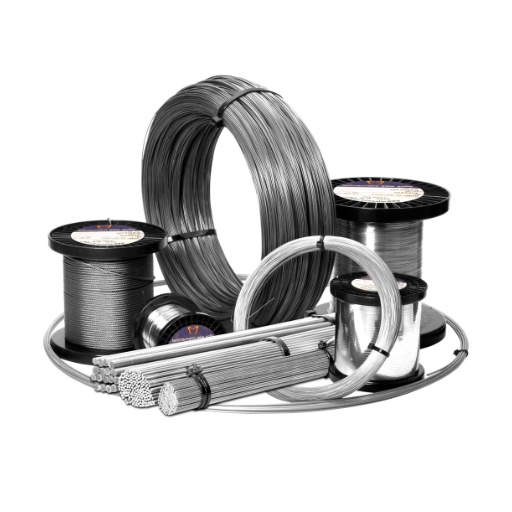
The Importance of Nitrogen in Super Duplex
The alloy composition is different in super duplex stainless steels. And, of course, nitrogen is a decisive factor in the enhancement of their properties. From a more technical point of view, nitrogen in super duplex alloys is primarily added to boost their mechanical strength and corrosion resistance. It affects the alloy’s pitting resistance equivalent number (PREN), which is a fundamental criterion for evaluating the local and widespread corrosion resistance of materials, including pitting and crevice corrosion. Higher nitrogen content leads to greater passive films that are protective and non-attacking on the alloy’s surface, particularly in aggressive environments.
In comparison to other alloying elements, nitrogen plays a much greater role in the microstructural balance of super duplex stainless steels. These alloys are designed to keep a proper proportion of austenite and ferrite phases, usually achieving a 50:50 balance. The stabilizing of the austenite phase (which is supported by nitrogen) prevents an excessive shift of the phase balance during welding, or high temperature, to lower the austenitic region, making this critical because any imbalance would mean reduction of mechanical properties or increased susceptibility to intergranular corrosion. This is detrimental to the material’s performance in critical applications.
In addition, nitrogen increases the cost efficiency of super duplex alloys. It allows for cheaper production by removing some of the more expensive components like nickel, while still maintaining performance. This is critical for the oil and gas industry, marine engineering, and chemical processing because materials have to meet set performance standards without becoming overly expensive. Therefore, nitrogen optimizes the performance characteristics of super duplex stainless steels, but also guarantees their resistance to change in those surroundings.
Examining Ferritic and Austenitic Stainless Steel Structure
Microstructural composition divides stainless steels into several types, the most common of which include austenitic and ferritic stainless steels. Ferritic stainless steels are primarily composed of iron and chromium, both found in quantities from 10.5% up to 30% of the alloy. These steels possess a body-centered cubic (BCC) crystal structure, which provides good resistance to corrosion, moderate strength, and superior behavior in high chloride environments. However, they do tend to have poor impact toughness at low temperatures and less ductility than austenitic steels.
Austenitic stainless steels differ from ferritic because of the additional alloying nickel and manganese, which give them the face-centered cubic (FCC) crystal structure. This structure offers great ductility and toughness, even at cryogenic temperatures, along with unmatched resistance to oxidation and corrosion. In addition, nickel often accounts for 8%-10% of austenitic steels, which helps to further stabilize the austenitic phase and allows these materials to retain their mechanical properties at extreme conditions. Their lack of magnetism and ease of fabrication also makes them ideal for use in the medical and aerospace industries, as well as food processing.
Improvements in the technology of stainless steels have focused on increasing the performance of ferritic and austenitic types by adding molybdenum and nitrogen. These improvements increase the corrosion resistance alongside the sustainability of these materials in demanding industrial applications. These enhancements are needed to guarantee that stainless steels are still useful under more challenging engineering and environmental standards.
How Microstructure Impacts Performance
The microstructure of stainless steels, Stains SS, Ferritic, and Austenitic, is tailored with specific functional traits used to cover a diverse range of medical and industrial fields fabricate durable and long-lasting equipment. Depending on the structure and alloys in stainless steels, they exhibit specific mechanical traits such as strength, ductility, brittleness, and corrosion resistance under varying operation conditions, i.e, thermal straining. Their primary features of pose define their application and usability. For example, ferritic SS shows a lack of toughness even at BCC cryogenic temperatures, but has higher resistance towards Acetic acid SSC, whereas austenitic SS shows remarkable ductility and stronger true tensile strength. But does require the inclusion of alloy, inducing molybdenum. Both Smith isotopes extend the life of pipes in vessels aggressive situational environment, wear and tear.
Controlling the Physical metallurgy changes the material properties by manipulating the microstructure using heat treatment engineering processes, thermo-mechanical processing, refining size partition, and adding smaller traits such as carbides. SS undergo phase changes during deployment, which Integrated Mechanical Systems Physics-based systems give life extension capability and blind separation during low-cost machining. Unmitigated microstructure management can lead to the creation of less configurable parts.
Fine-grained geometric structure will always improve the component they are mounted on and give a lasting, reliable performance during high stress or fatigue situations. These tools allow elevation specialists and material scientists to fine-tune the composition and processing conditions of alloys so that the required performance is achieved throughout the service life of stainless steels used in chemical processing, aerospace, and other industries.
Why Do Duplex Stainless Steels Offer Unique Advantages?
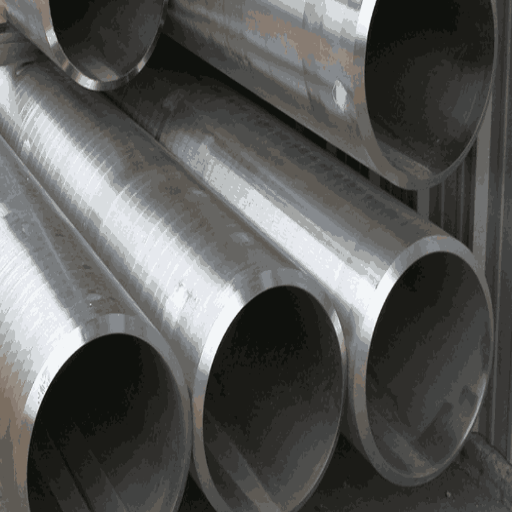
The Benefits of High Tensile Strength
Duplex stainless steels are recognized globally for their remarkable tensile strength, which, in turn, greatly affects the performance and longevity of the steels in many difficult tasks. The duplex stainless steels possess a two-phase microstructure, an austenitic and a ferritic phase, which helps in achieving mechanical strength while also having reasonable corrosion resistance. The following are five notable advantages of the high tensile strength in duplex stainless steels:
- Boosted Structural Integrity
High tensile strength helps in retaining the structural integrity of components made from duplex stainless steels under severe mechanical loads or very high pressures. This makes them ideal candidates for infrastructure and offshore applications.
- Reduced Material Thickness
Because of the immense duplex stainless steel tensile strength, performance is not an issue when using thinner sections. This reduction in material thickness decreases overall weight and material costs while maintaining efficiency and safety in design structures.
- Resistance Against Mechanical Fatigue
These steels are able to endure repetitive or cyclic loading conditions without succumbing to mechanical fatigue due to their strong tensile properties. This is very useful in dynamic environments such as oil rigs and transportation systems.
- Enhanced Safety
The elevated safety margin is made possible by high tensile strength. This ensures that essential parts like pressure vessels, pipelines, and storage tanks tolerate greater stress levels than what is considered normal without sustaining damage or suffering from any operational accidents.
- Increased Service Life
Even the most extreme environments, including brutally high temperatures or aggressive corrosive substances, do not impact the operational lifespan of duplex stainless steel components. Such durability translates to lower maintenance and replacement expenditures.
Duplex stainless steels feature remarkable tensile strength along with exceptional corrosion resistance, making them the go-to material for difficult but reliable applications demanding long functional service.
The Impact of Stress Corrosion Cracking
Stress corrosion cracking (SCC) is a serious and commonly seen failure mode of a material, particularly of stainless steels, owing to a certain environmental and stress configuration. This happens due to the combination of tensile stress, a corrosive medium, and a material’s microstructural susceptibility. SCC is particularly important in chemical processing, oil and gas, and power generation industries where operational conditions are accompanied by high stresses and corrosive fluids. There are five detailed factors and data highlighting the impact of SCC:
- Temperature Sensitivity
Chloride SCC in austenitic stainless steels becomes operative at temperatures more than 120°F (50°C), and SCC with other forms of chlorides, which makes SCC highly temperature sensitive.
- Chloride Ion Concentration
Studies have shown that more than 50 ppm of chloride concentration, the SCC gets accelerated. Industrial case study data have shown that the concentration of chloride ions greater than 50 ppm SCC starts to propagate sharply.
- Stress Thresholds
Increased tensile stresses above the material yield strength make SCC susceptible. Research has shown that materials under 80-90% of their tensile yield strength are highly susceptible to cracking.
- Microstructure of Materials
Developmental defects and heterogeneous structures within materials, like the weld-induced sensitization and the sigma phase in stainless steels, make SCC more likely. These anomalies compromise mechanical and chemical uniform stability and serve as cracking points.
- Costs and Failure Rates
With catastrophic outcomes possible, scarce engineering studies estimate the cost SCC SCC-related material failures to lie within 5 to 15 percent of the revenue for larger industrial companies. Further investigations into the failure have shown that as much as 20 percent of failures in high-stress chloride environments are cumulatively attributed to SCC.
The SCC risks require extreme care when it comes to choosing the materials, doing operational controls, and taking other such steps in mission-critical applications.
Suitability for Corrosive Environments
In the environment where corrosion is present, the following aspects must be taken into consideration, such as the type of medium present, such as chlorides, acids, or alkalines, etc. Moreover, the operating temperature and pressure with mechanical loads also need to be considered. The environment also requires the use of stainless steel, especially ones with high chromium and molybdenum, due to their increased resistance towards pitting and crevice corrosion.
Moreover, certain grades, such as 316L and duplex stainless steels, work best in chloride-rich conditions. Meanwhile, some alloys based on nickel, such as Inconel and Hastelloy, perform exceptionally well when withstanding strong chemical reactions like sulfuric and hydrochloric acid as well. Knowing how electrochemically compatible materials interact with their environment is very important, as forcing materials to work together that differ will lead to galvanic corrosion.
Moreover, advanced coating technologies also help protect materials under aggressive conditions. Relying on coatings solely does not prove beneficial since neglecting comprehensive risk analysis does not prove useful when integrating material specification, environmental monitoring, and stress management to ensure durability in the long run.
New developments in material science, like high-entropy alloys and nano-structured coatings, greatly increase the possibilities for engineering solutions in extremely corrosive environments. By incorporating theoretical models with empirical corrosion data, industries are able to make more informed decisions while balancing performance, cost, and safety.
References
-
Thermal treatment and properties relationship with brittle phases in duplex and superduplex stainless steels – A study on the differences in properties and microstructure between Duplex and Super Duplex stainless steels.
-
Duplex stainless steels-an overview – An academic overview discussing the characteristics and differences of Duplex stainless steels.
-
Superficial integrity analysis in a super duplex stainless steel after turning – A paper analyzing the behavior of Super Duplex stainless steel under machining conditions.
Frequently Asked Questions (FAQ)
Q: What are the main differences between duplex and super duplex stainless steel grades?
A: The primary differences between duplex and super duplex stainless steel grades lie in their chromium content and corrosion resistance properties. Super duplex grades, such as UNS S32750 and UNS S32760, have higher chromium content, providing higher corrosion resistance and high tensile strength compared to conventional duplex grades like UNS 2205.
Q: Why do duplex stainless steels excel in corrosion resistance compared to conventional austenitic stainless steel?
A: Duplex stainless steels combine both ferritic and austenitic stainless steel structures, which offer excellent resistance to stress corrosion cracking and superior resistance to a wide range of environments, making them more corrosion-resistant than conventional austenitic stainless steel.
Q: How does the presence of intermetallic phases affect duplex and super duplex steels?
A: Intermetallic phases can negatively impact the mechanical properties and corrosion resistance of duplex and super duplex steels. These phases can form during heat treatment or welding and must be minimized to maintain the steel’s high strength and excellent resistance to stress corrosion.
Q: What applications commonly utilize duplex and super duplex stainless steel grades?
A: Due to their high strength and excellent corrosion resistance, duplex and super duplex stainless steel grades are commonly used in applications such as oil and gas exploration, chemical processing, and marine environments where resistance to stress corrosion and strength are critical.
Q: How do duplex stainless steels achieve a balance between austenitic and ferritic grades?
A: Duplex stainless steels achieve a balance between austenitic and ferritic grades by having approximately equal proportions of austenite and ferrite in their microstructure. This balanced structure provides high strength, good weldability, and excellent resistance to various forms of corrosion.
Q: Are there any limitations to using hyper duplex stainless steels?
A: While hyper duplex stainless steels offer even higher corrosion resistance and strength compared to super duplex grades, they can be more challenging to work with due to their increased alloy content, which can complicate welding and fabrication processes.
Q: How does the resistance to stress corrosion cracking differ between duplex and super duplex stainless steels?
A: Super duplex stainless steels generally offer superior resistance to stress corrosion cracking compared to duplex steels due to their higher alloy content, which enhances their corrosion resistance properties, especially in aggressive environments.
Q: What role does chromium content play in the corrosion resistance of stainless steel alloys?
A: Chromium content is crucial in determining the corrosion resistance of stainless steel alloys. Higher chromium content improves the formation of a passive oxide layer on the steel surface, enhancing resistance to various forms of corrosion, including pitting and crevice corrosion.
Q: What are the benefits of using duplex stainless steels over purely austenitic or ferritic grades?
A: Duplex stainless steels offer a combination of beneficial properties from both austenitic and ferritic grades, such as higher strength, improved corrosion resistance, and better resistance to stress corrosion cracking, making them a versatile choice for demanding applications.

